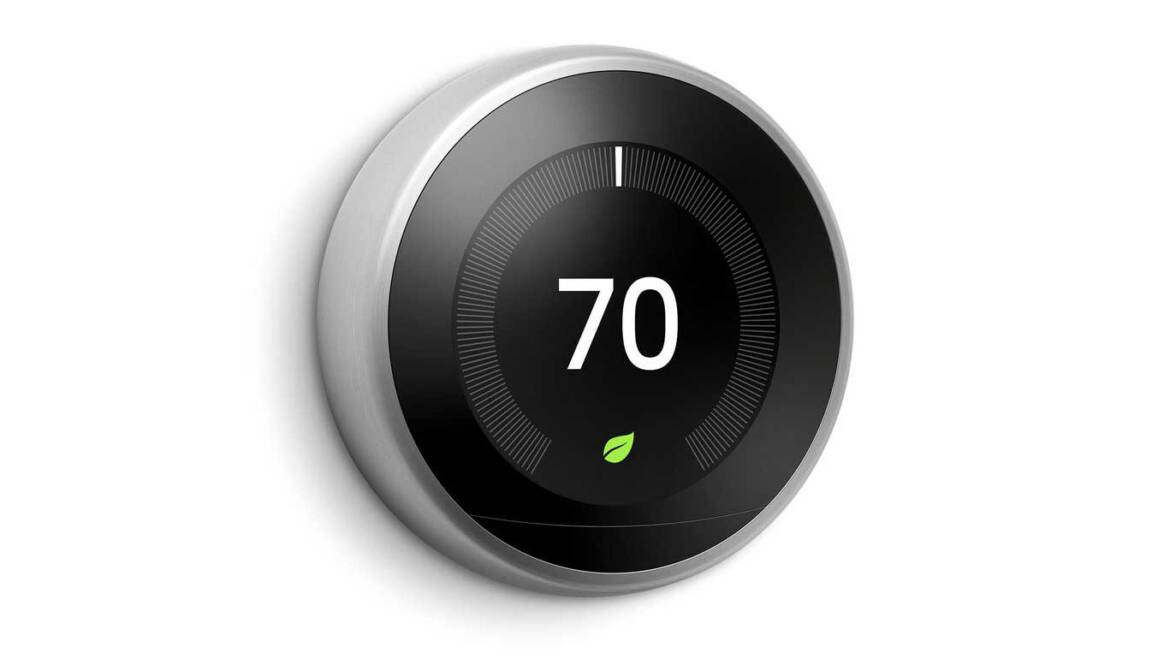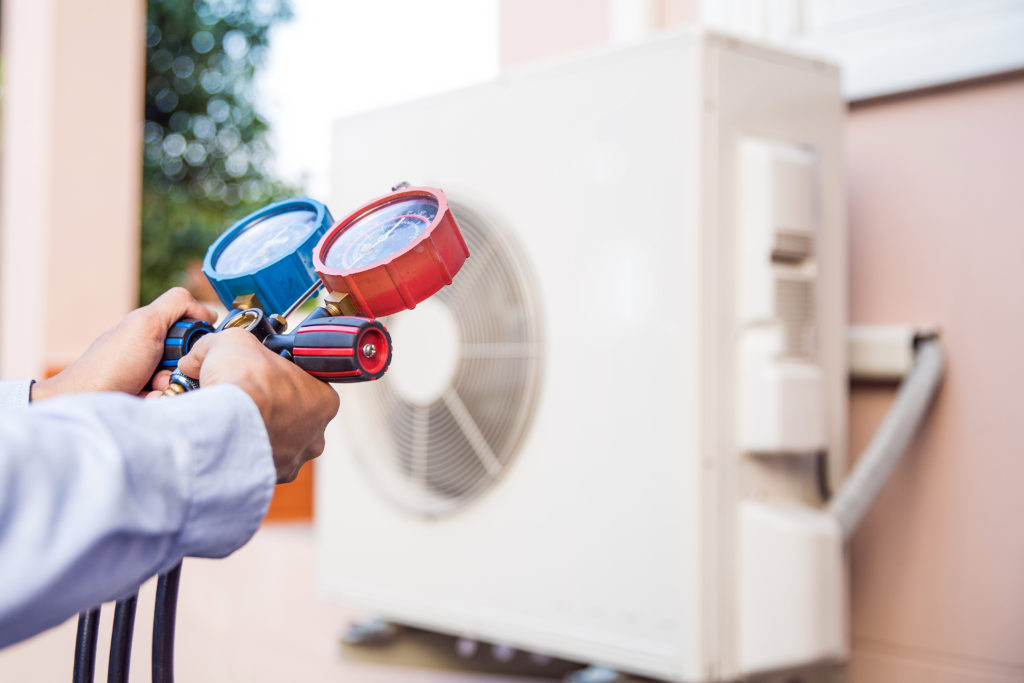Smart thermostats are becoming more widely used in homes to save energy consumers money. With the cost of energy rising significantly in 2022 alongside the cost of living, more and more consumers will be considering installing a smart thermostat to try and save money.
What are the pros and cons of smart thermostats, and do the benefits outweigh the drawbacks?
What’s the Difference Between Conventional Thermostats and Smart Thermostats?
Let’s start by looking at how a smart thermometer is different from the conventional thermometer that many of us are used to. Here are some of the key distinctions:
- Remote access. Traditionally, if you wanted to adjust the thermostat you had to get up, walk over to the device, and manually adjust it. With a smart thermometer, you just need to open the app and you can change the temperature. This can be done remotely; you don’t even need to be at home.
- Programmable. Within the smart thermostat app, you can program the thermostat. You can set when to raise or lower the temperature. Over time, the thermostat can even get to know your preferences and automatically pick the most comfortable settings. This isn’t possible with a traditional thermostat.
- Getting data insights. Smart thermostats can give insight into how the device is being used. You’ll be able to learn how much electricity is being used and at what times. This can allow you to adjust your usage.
- More features. Many brands come with even more ways to use the thermostat. For example, you can link it to your Alexa, raising or lowering the temperature with your voice. Others will link to your phone, switching off automatically when you leave the house.
Which option you use is up to you. If you are looking for a basic way of adjusting the temperature, you might be happy with a traditional thermostat. But, increasingly, the ease of using a smart thermostat has started to win people over. We’ll discuss the pros and cons in more depth a little later.
What are the Most Popular Types of Smart Thermostats?
As technology has become more advanced, more people have wanted to start using a smart thermostat. Because of this, there are many options for you to choose from. Some of the most popular include:
- Ecobee
- Google Nest
- Amazon Smart Thermostat
- Honeywell
Before choosing which one to use, it’s a good idea to look at the features that are included. For example, some will have the ability to play music through Spotify. Others can be integrated with voice control technology, like Amazon Alexa.
What Are Newer Smart Thermostats Technologies?
Smart thermostats operate in the same way as traditional in-house thermostats to control central heating levels and when boilers automatically turn on and off. However, smartphone apps control smart thermostats, providing consumers with more flexibility than traditional thermostats.
They use two types of technology. One is geolocation fencing, which uses your smartphone location to adjust the temperature in your home. When your phone leaves the area, the temperature reverts to a pre-set level, then when your thermostat senses your phone within a certain distance of your home, it will begin to warm to your desired comfort level.
The second technology uses algorithm software which learns the consumer’s behavior over several weeks and uses that knowledge to automatically adjust to the desired temperature based on the consumer’s habits.
Smart Thermostats – The Pros
When thinking of investing in a smart thermostat, there are several positive aspects to consider.
- Flexibility – Many smart thermostats come with several different settings and options. You can set the heating or air-conditioning on a specific time before you arrive home from a hard day in the office and even set different temperature levels in other rooms.
- Saves Energy – Smart thermostats can significantly lower energy consumption when appropriately programmed. The thermostat turns itself on or cuts itself off when closer to the desired temperature than manual thermostats.
- Easy to Control – All Smart thermostats are smart-device compatible, allowing users to remotely control temperature levels at home using their smartphone or tablet. If you have a working internet connection, you can get the house temperature ready for your return.
- Analytics – The smartphone and tablet apps allow users to monitor their energy usage. This helps with budgeting and identifying areas in which you might be able to save energy to cut bills and consumption.
- Maintenance Reminders – Smart thermostats can be programmed to provide you with prompts to tell you when specific maintenance is required. For example, when the filter on your air-conditioning needs replacing. These reminders can prevent potentially costly callouts in the future.
- Lower Energy Bills – All of the above steps can help achieve the ultimate goal of lowering energy bills, leading to long-term savings.
Smart Thermostats – The Cons
Along with the positives of a smart thermostat, however, some things might make this investment a little less sweet-sounding.
- Initial Investment – Smart thermostats are not necessarily cheap, ranging from around $200 to more than $500. Many units require specialist installation, which will produce high additional costs.
- Compatibility – Some existing heating and air-conditioning systems may not be compatible with smart thermostat technology. There may be an option to include a smart thermostat if the HVAC system is being entirely replaced; however, it is best to maintain the manual thermostat where they are incompatible with existing units.
- Complex to Use – The smartphone compatibility will make smart thermostats an ideal component for tech-savvy people. However, not everyone has smart devices or plans to use them. The touchscreen capabilities can be challenging to learn for some and not deliver savings.
- Reliance on the Provider – A provider hosts and manages each smart thermostat. When investing in innovative thermostat technology, there is a reliance on their power and server systems being robust enough to cope with demand. If they experience a power or server failure, that will impact their consumers’ ability to heat their homes.
Conclusion
Installing smart thermostats in homes where systems are compatible, and people are not at home full-time can produce significant cost-saving benefits to consumers. The flexibility to adapt to individuals’ different lifestyles and patterns substantially benefits many.
However, it is essential to understand that smart thermostats are not for everyone. Installing them in locations where consumers may not fully understand the touch-screen technology can produce higher energy bills in the future. Others may not be able to afford the initial installation.
There are several different options on the market. If you are interested in finding out whether smart thermostats can help you lower energy bills, talk to a professional who will help find the right solution for you.
Whether you require installation, repair, or maintenance, our technicians will assist you with top-quality service at any time of the day or night. Take comfort in knowing your indoor air quality is the best it can be with MOE heating & cooling services Ontario's solution for heating, air conditioning, and ventilation that’s cooler than the rest.
Contact us to schedule a visit. Our qualified team of technicians, are always ready to help you and guide you for heating and cooling issues. Weather you want to replace an old furnace or install a brand new air conditioner, we are here to help you. Our main office is at Kitchener but we can service most of Ontario's cities
Source link




Add Comment